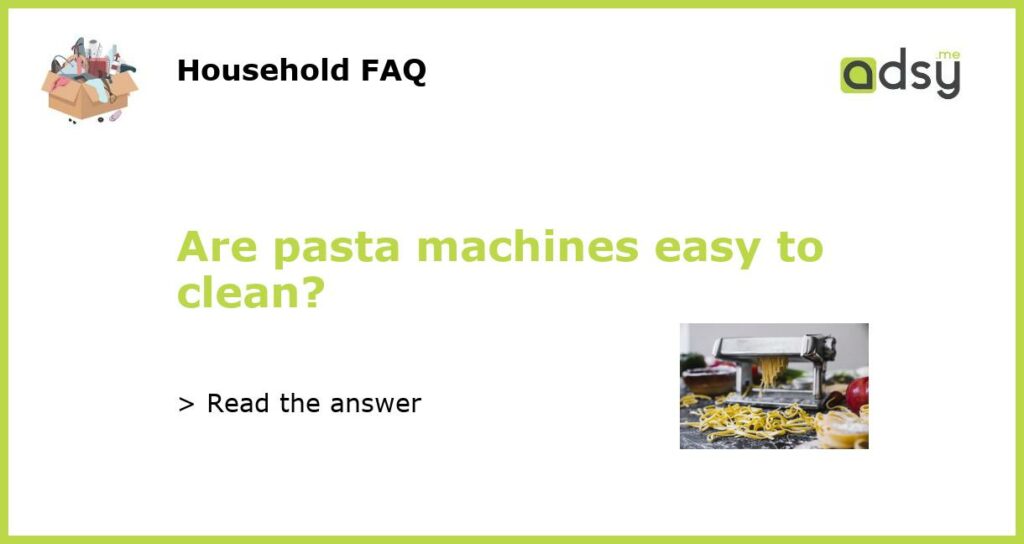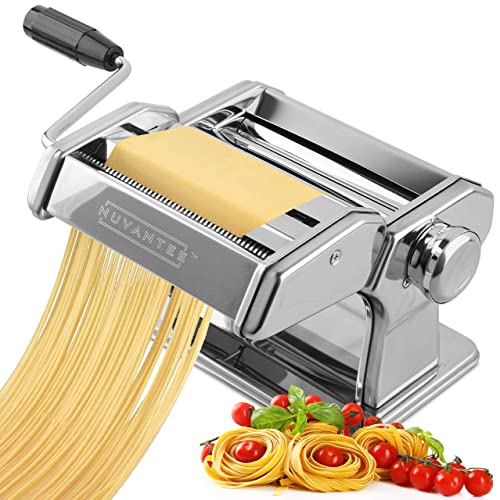Yes, pasta machines are easy to clean
A pasta machine is a valuable kitchen tool for homemade pasta enthusiasts. While making fresh pasta can be a fun and rewarding experience, the thought of cleaning up afterwards can sometimes be daunting. However, pasta machines are generally easy to clean if you follow a few simple steps. In this article, we will discuss why pasta machines are easy to clean and provide some tips on how to clean them effectively.
The simplicity of the design
One of the reasons why pasta machines are relatively easy to clean is because of their simple design. Most pasta machines consist of a few basic components, such as a roller and cutting attachments. These components are typically made from stainless steel or other non-stick materials, which makes them easy to wipe down and clean. The absence of intricate parts or hard-to-reach crevices simplifies the cleaning process.
Basic cleaning steps
To clean a pasta machine, start by disassembling the machine according to the manufacturer’s instructions. Remove any visible pieces of dough or leftover pasta from the rollers and cutting attachments. You can use a small brush or toothpick to remove any stubborn bits. Once the visible debris is removed, use a damp cloth or sponge to wipe down the machine, paying attention to all surfaces. If there are any parts that are difficult to clean manually, consider using a small amount of mild dish soap to help remove any residue. Finally, thoroughly dry all parts before reassembling the machine for storage.
Cleaning maintenance tips
Regular cleaning maintenance will help keep your pasta machine in optimal condition and ensure it remains easy to clean after each use. Here are a few tips:
- After each use, wipe down the machine with a damp cloth or sponge to remove any dough or pasta remnants.
- Store your pasta machine in a clean and dry place to avoid moisture and dust buildup.
- Avoid immersing the entire machine in water or using harsh cleaning chemicals, as this can damage the machine’s components and affect its performance.
- If you notice any signs of rust or corrosion on your pasta machine, use a small amount of cooking oil or food-grade lubricant to prevent further damage and ensure smooth operation.
Other cleaning options
While the traditional method of manually cleaning a pasta machine is effective, there are alternative options available. Some pasta machines come with dishwasher-safe components, which can make cleaning even easier. If your pasta machine is dishwasher-safe, simply disassemble the machine according to the manufacturer’s instructions and place the removable parts in the dishwasher. Be sure to consult the machine’s manual to determine if it is dishwasher-safe before attempting this method.
Pasta machines are generally easy to clean due to their simple design and use of non-stick materials. By following a few basic cleaning steps and incorporating regular maintenance, you can ensure that your pasta machine remains clean and in optimal condition for years to come. Whether you choose to clean your pasta machine manually or utilize a dishwasher, maintaining cleanliness is essential for hygienic food preparation.






